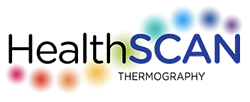Double the clinical evidence when wanting to be proactive with your health......how about that?? I came across an article for the Aortic Pulse Wave Velocity device a few months ago and decided to use it with clients who are having a Wellness or Full Body scan done. It's been amazing to see the correlation between the scan results and the iHeart device results. Here's an interesting article to further explain just how important recognizing aortic stiffness can be.
A New Way to Measure Health
Twenty years ago, scientists discovered a measurement with startling implications. This single measurement not only indicates overall health status and predicts lifespan but also shows positive and negative consequences of lifestyle choices including exercise, diet and stress management. This unique and integrative metric has been proven to predict risk of death from all causes in over 100 separate studies published in respected peer reviewed journals. Multiple meta-analyses have supported this evidence. Many studies have shown exercise consistently improving this metric, with even older people benefiting promptly. This amazing metric has been shown to identify people in their 30’s at higher risk of heart disease, stroke and dementia, and is able to guide people to wise lifestyle choices, wellness and long life.
Aortic Stiffness, measured using Aortic Pulse Wave Velocity (PWV), is the ‘Master Metric’. The Aorta is the body’s largest blood vessel, running from the heart through the chest and abdomen. It runs immediately in front of the spinal column and acts as a surrogate measure of spinal stiffness and mobility of the body’s core regions (Core Mobility).
Yoga, Tai Chi and other ancient healing arts have long emphasized the importance of spinal flexibility and Core Mobility as important for health and long life. With good Core Mobility, each breath becomes an engine of health, creating pressure changes that drive nourishing fluid up the spine to the brain. Each breath compresses the liver, spleen, kidneys and other internal organs like sponges, driving fluid through their microcirculatory systems and supporting function, health and long life.
A scientific article published June 30th, 2017 titled ‘Greater Progression of Age-Related Aortic Stiffening in Adults with Poor Trunk Flexibility: A 5-Year Longitudinal Study’ indicates the close relationship between Aortic Stiffness and stiffness of the torso, based largely on spinal stiffness.
The Only Metric You Need
Aortic Stiffness, the Master Metric, was previously difficult to measure using Aortic PWV and required a skilled technician to place pressure sensors over arteries in the neck and groin. Recently, however, a new technique to measure Aortic PWV through identification of a specific section of the fingertip pulse wave (known as the Aortic Reflected Wave) has made it simple and easy to measure and monitor the Master Metric.
iHeart Internal Age uses a fingertip pulse sensor, a 30-second test and mobile app to measure Aortic PWV. With regular exercise, good diet and stress management, Internal Age (determined by comparing a user’s Aortic PWV reading to average Aortic PWV values per age) will decrease and encourage lasting behavioural change.
The Master Metric is a bridge between ancient Eastern wisdom and modern Western scientific knowledge.
A number of years ago the inventor of iHeart, Dr. Jess Goodman, was studying Tai Chi under the guidance of a Taoist monk. The monk asked Dr. Goodman to show people the health benefits that resulted from stretching between the heart and the kidneys. Aortic Stiffness, the Master Metric, is the answer to that request and is offered to the world as a simple and easy guide to living well.
By Adam Sharp, July 14, 2017



